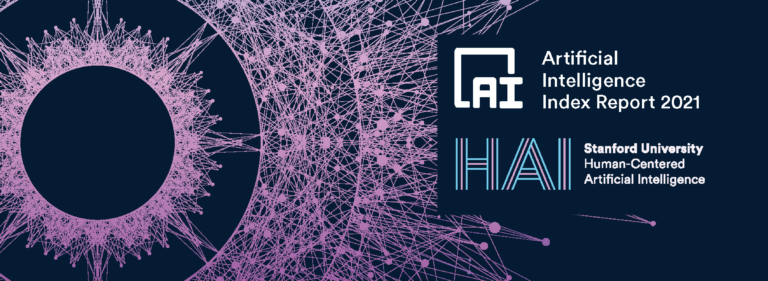
Michael Sellitto
Deputy Director - Stanford Institute for Human-Centered Artificial Intelligence
Michael Sellitto is Deputy Director of Stanford Human-Centered AI Institute. From 2015-2018, Michael served in the White House as Director for Cybersecurity Policy on the National Security Council staff. In that role he led international engagement on cybersecurity policy and strategy, promoted international adoption of a framework for strategic stability in cyberspace, and advanced U.S. interests on issues related to the digital economy and Internet governance. He also led international negotiations to develop cybersecurity partnerships. Michael previously served as Special Assistant to Deputy Secretaries of State William Burns and Antony Blinken, advising the Deputies on political, energy, security, and trade issues related to South and Central Asia and on worldwide cyber and counterterrorism policy and operations.
Michael Sellitto's publications
Michael Sellitto's documents
AI Index Report 2021 Chapter 7
This chapter navigates the landscape of AI policymaking and tracks efforts taking place on the local, national, and international levels to help promote and govern AI technologies. It begins with an overview of national and regional AI strategies and then reviews activities on the intergovernmental level. The chapter then takes a closer look at public investment in AI in the United States as well as how legislative bodies, central banks, and nongovernmental organizations are responding to the growing need to institute a policy framework for AI technologies.— March 15, 2021
AI Index Report 2021 Chapter 6
This chapter presents diversity statistics within the AI workforce and academia. It draws on collaborations with various organizations—in particular, Women in Machine Learning (WiML), Black in AI (BAI), and Queer in AI (QAI)— each of which aims to improve diversity in some dimension in the field. The data is neither comprehensive nor conclusive. In preparing this chapter, the AI Index team encountered significant challenges as a result of the sparsity of publicly available demographic data. The lack of publicly available demographic data limits the degree to which statistical analyses can assess the impact of the lack of diversity in the AI workforce on society as well as broader technology development. The diversity issue in AI is well known, and making more data available from both academia and industry is essential to measuring the scale of the problem and addressing it.— March 15, 2021
AI Index Report 2021 Chapter 5
This chapter tackles the efforts to address the ethical issues that have arisen alongside the rise of AI applications. It first looks at the recent proliferation of documents charting AI principles and frameworks, as well as how the media covers AI-related ethical issues. It then follows with a review of ethics-related research presented at AI conferences and what kind of ethics courses are being offered by computer science (CS) departments at universities around the world.— March 15, 2021
AI Index Report 2021 Chapter 4
This chapter focuses on trends in the skills and training of AI talent through various education platforms and institutions. What follows is an examination of data from an AI Index survey on the state of AI education in higher education institutions, along with a discussion on computer science (CS) undergraduate graduates and PhD graduates who specialized in AI-related disciplines, based on the annual Computing Research Association (CRA) Taulbee Survey. The final section explores trends in AI education in Europe, drawing on statistics from the Joint Research Centre (JRC) at the European Commission.— March 15, 2021
AI Index Report 2021 Chapter 3
This chapter looks at the increasingly intertwined relationship between AI and the global economy from the perspective of jobs, investment, and corporate activity. It first analyzes the worldwide demand for AI talent using data on hiring rates and skill penetration rates from LinkedIn as well as AI job postings from Burning Glass Technologies. It then looks at trends in private AI investment using statistics from S&P Capital IQ (CapIQ), Crunchbase, and Quid. The third, final section analyzes trends in the adoption of AI capabilities across companies, trends in robot installations across countries, and mentions of AI in corporate earnings, drawing from McKinsey’s Global Survey on AI, the International Federation of Robotics (IFR), and Prattle, respectively.— March 15, 2021
AI Index Report 2021 Chapter 2
This chapter highlights the technical progress in various subfields of AI, including computer vision, language, speech, concept learning, and theorem proving. It uses a combination of quantitative measurements, such as common benchmarks and prize challenges, and qualitative insights from academic papers to showcase the developments in state-of-the-art AI technologies.— March 15, 2021
Academia
AI Index Report 2021 Chapter 1
This chapter begins by examining AI publications—from peer-reviewed journal articles to conference papers and patents, including the citation impact of each, using data from the Elsevier/Scopus and Microsoft Academic Graph (MAG) databases, as well as data from the arXiv paper preprint repository and Nesta. It examines contributions to AI R&D from major AI entities and geographic regions and considers how those contributions are shaping the field. The second and third sections discuss R&D activities at major AI conferences and on GitHub.— March 15, 2021
AI Index Report 2021
The AI Index Report tracks, collates, distills, and visualizes data related to artificial intelligence. Its mission is to provide unbiased, rigorously vetted, and globally sourced data for policymakers, researchers, executives, journalists, and the general public to develop intuitions about the complex field of AI. The report aims to be the world’s most credible and authoritative source for data and insights about AI. This year we significantly expanded the amount of data available in the report, worked with a broader set of external organizations to calibrate our data, and deepened our connections with Stanford’s Institute for Human-Centered Artificial Intelligence (HAI).— March 15, 2021
Disclaimer: The opinions expressed and arguments employed herein are solely those of the authors and do not necessarily reflect the official views of the OECD, the GPAI or their member countries. The Organisation cannot be held responsible for possible violations of copyright resulting from the posting of any written material on this website/blog.


























